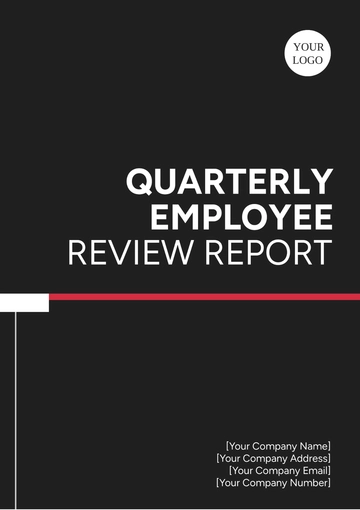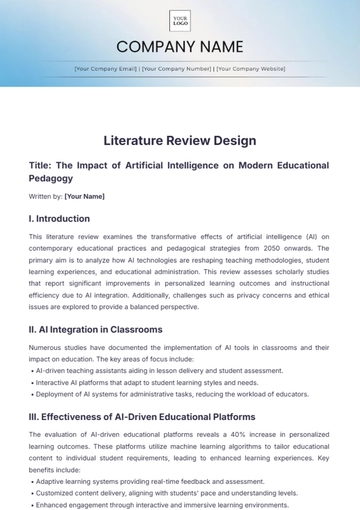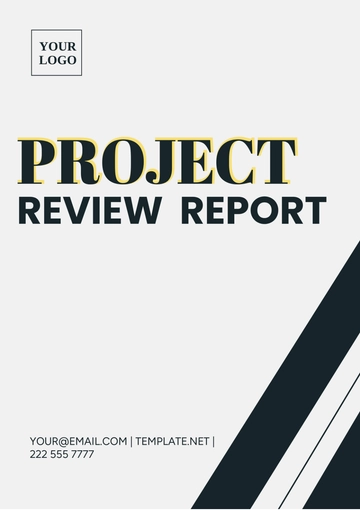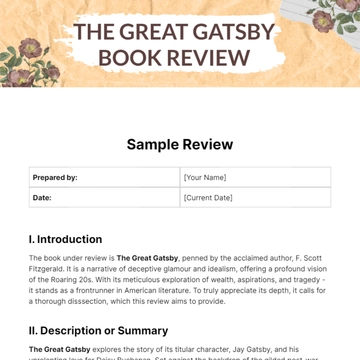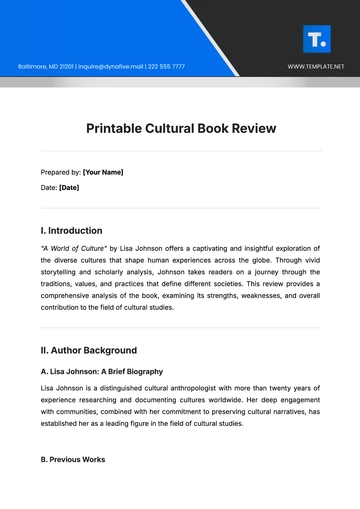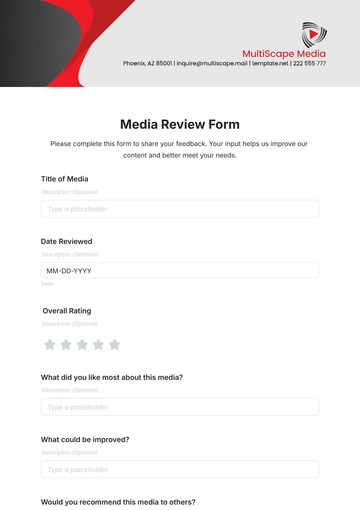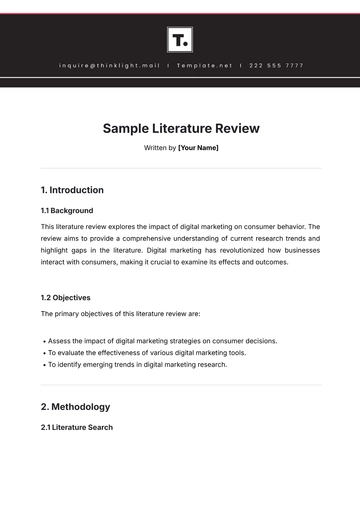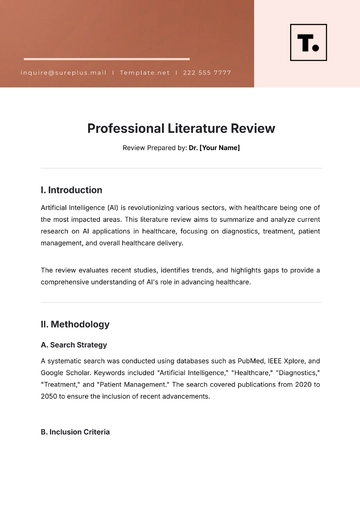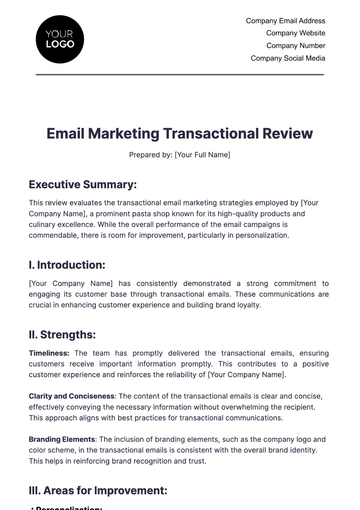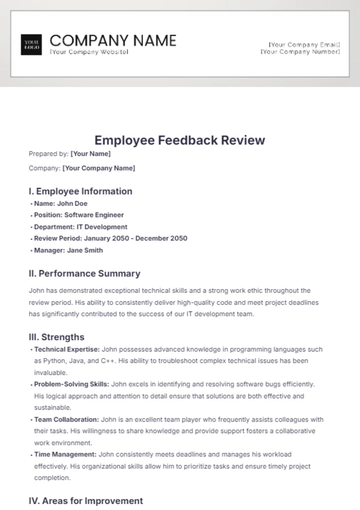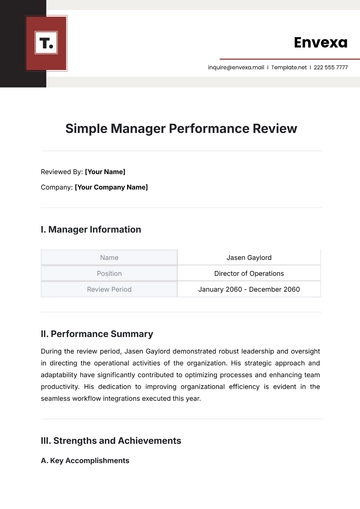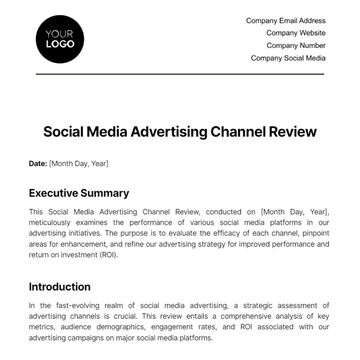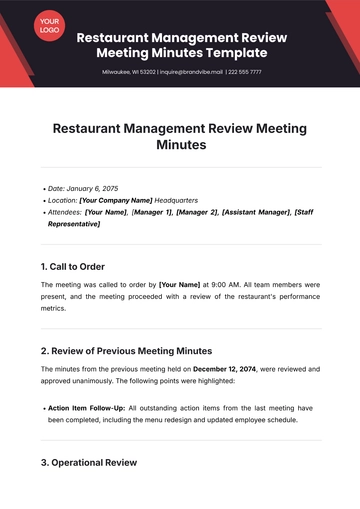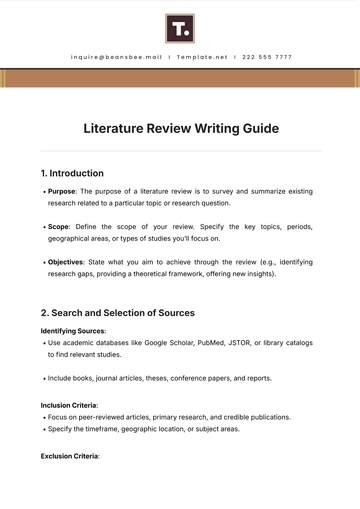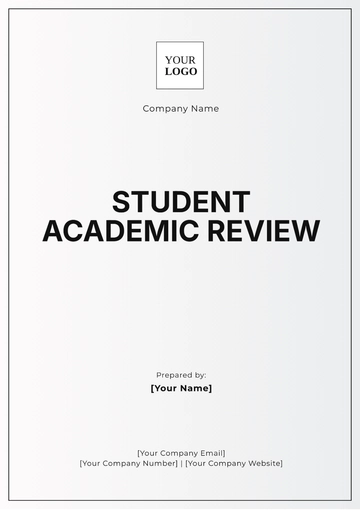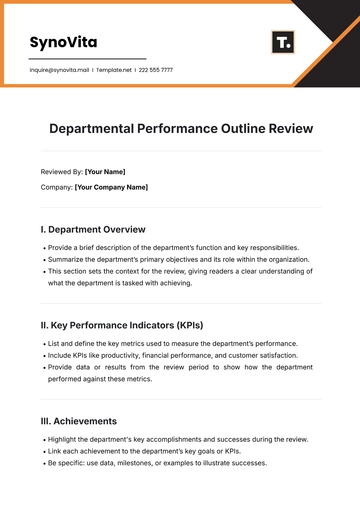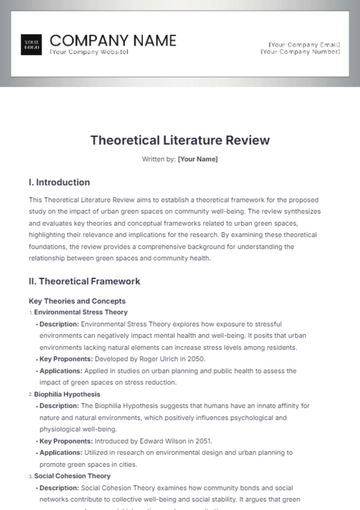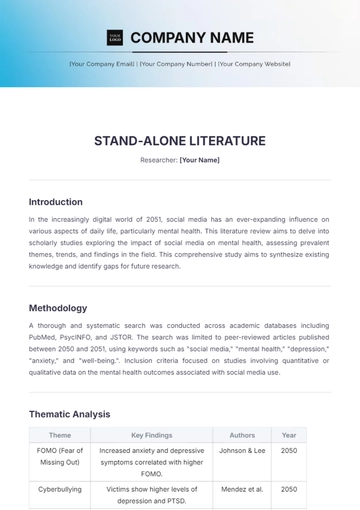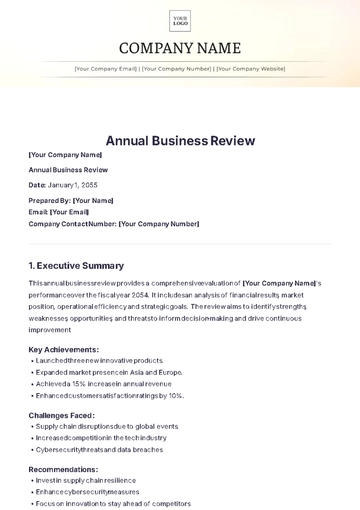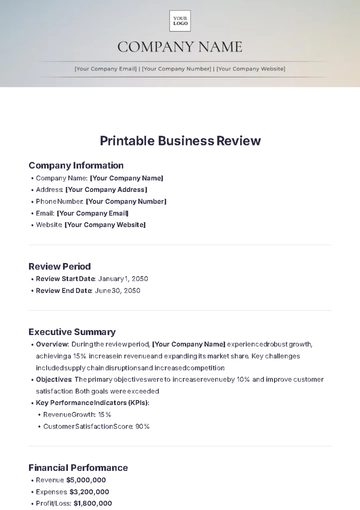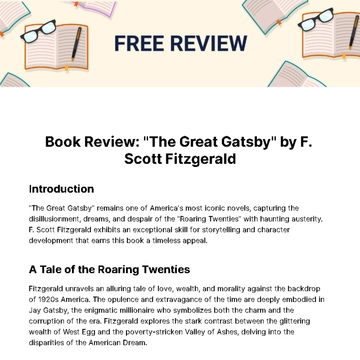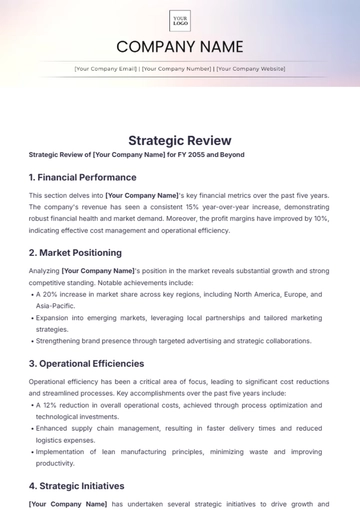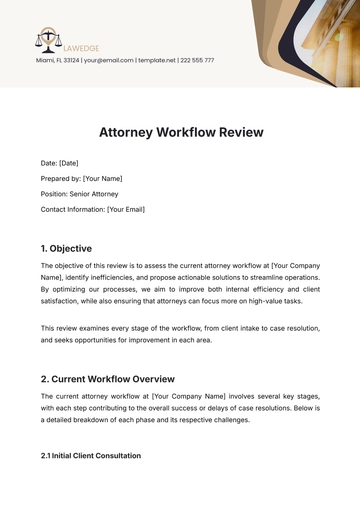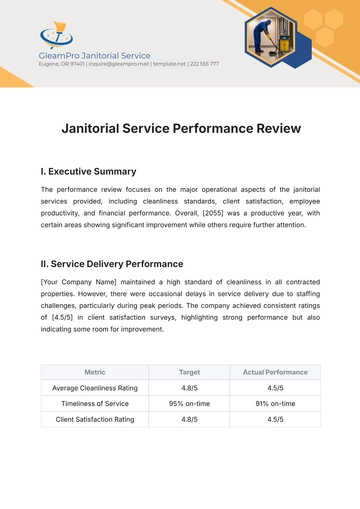Free Urban Planning Systematic Review
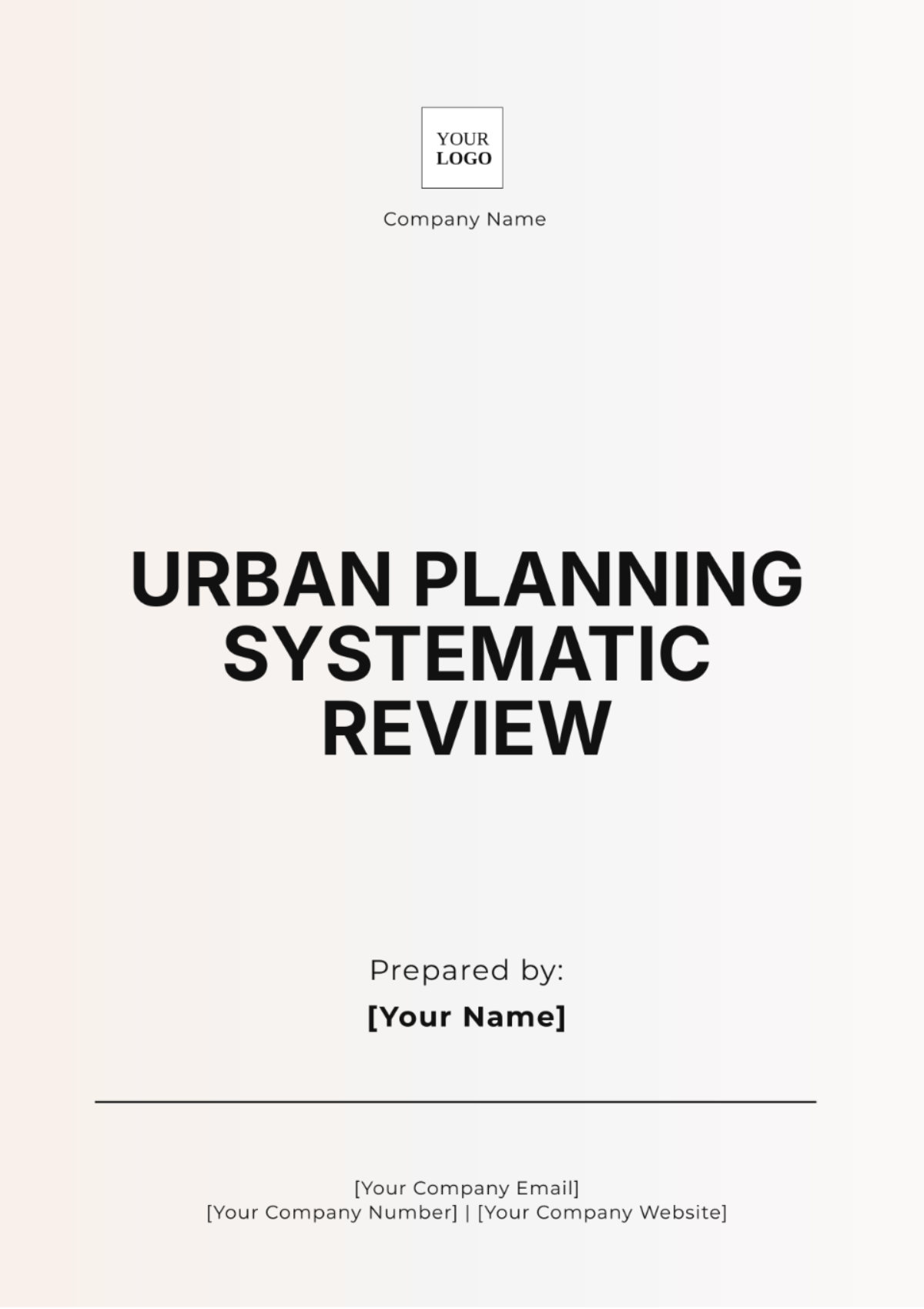
Prepared by: [YOUR COMPANY NAME]
Date: [DATE]
I. Introduction
The purpose of this urban planning systematic review is to conduct a comprehensive and methodical evaluation of existing research and literature related to urban planning. This review aims to synthesize findings from multiple studies to provide a clear understanding of current knowledge, trends, and gaps in the field. By systematically collecting, assessing, and summarizing evidence on specific urban planning topics, such as land use, transportation, and environmental impacts, this review seeks to contribute valuable insights and guidance to policymakers, urban planners, and researchers.
The significance of this review lies in its potential to inform evidence-based decision-making in urban planning. By compiling and analyzing research findings from diverse studies, this review offers a well-rounded perspective on various urban planning issues. This can help identify best practices, reveal emerging trends, and highlight areas where further research is needed.
II. Methodology
Inclusion Criteria | Exclusion Criteria |
|
|
Search Strategy: A comprehensive search of electronic databases, including PubMed, Google Scholar, and Scopus, was conducted. Keywords such as "urban planning," "land use," "transportation," and "environmental impacts" were used to identify relevant studies.
Data Extraction: Information from the selected studies was systematically extracted, including study objectives, methodologies, findings, and conclusions.
Data Analysis: A qualitative synthesis of the extracted data was performed, identifying key trends, patterns, and thematic areas in the literature.
III. Results
A. Land Use Trends
Mixed-Use Developments: Studies frequently emphasize the advantages of mixed-use developments, which integrate residential, commercial, and recreational spaces within a single area. This approach aims to reduce automobile dependency by encouraging walking and cycling, thereby promoting more sustainable urban environments.
Case Studies: Research from cities like Portland, OR, and Copenhagen demonstrates that mixed-use developments can significantly enhance local economies and reduce traffic congestion.
Quantitative Data: A study published in the Journal of Urban Planning found that mixed-use neighborhoods saw a 20% increase in pedestrian traffic and a 15% decrease in car trips.
B. Transportation Patterns
Sustainable Transportation Options: There is a notable shift towards incorporating various sustainable transportation options. This includes:
Public Transit: Expansion and improvement of public transit systems to make them more efficient and accessible.
Cycling Infrastructure: Development of dedicated bike lanes and bike-sharing programs.
Pedestrian Pathways: Enhancement of sidewalks and pedestrian zones to encourage walking.
Integration of Transportation Networks: Research highlights efforts to integrate different transportation modes. For instance, transit hubs that connect buses, trains, and bike-sharing stations facilitate seamless travel.
Case Studies: The integration of multi-modal transportation in cities like Amsterdam and Vancouver has led to increased use of public transport and cycling by 25% and 30%, respectively.
C. Environmental Impacts
Green Building Practices: Emphasis on incorporating sustainable building practices such as energy-efficient design, use of renewable materials, and adherence to green building standards like LEED (Leadership in Energy and Environmental Design).
Urban Green Spaces: Creation and maintenance of urban green spaces, such as parks and community gardens, to improve air quality, provide recreational opportunities, and enhance overall urban resilience.
Urban Heat Islands: Measures to combat urban heat islands, such as the installation of green roofs, reflective materials, and increased tree cover, are highlighted as essential strategies for mitigating the negative impacts of urbanization.
Case Studies: The introduction of green roofs in Chicago has been associated with a 10-15°F reduction in local temperatures, while extensive urban greening efforts in Singapore have improved air quality and reduced the heat island effect.
IV. Discussion
The results of this review suggest several implications for urban planning practice and research:
Policy Implications: The shift towards mixed-use developments and sustainable transportation options indicates a need for updated policies that support these trends. Policymakers should consider revising zoning regulations and investing in public transit infrastructure.
Research Gaps: The review identifies several areas where further research is needed. These include the long-term impacts of mixed-use developments on community well-being, the effectiveness of different transportation integration strategies, and the role of green spaces in urban resilience.
Practical Applications: Urban planners can use the findings of this review to inform the design and implementation of projects that align with best practices identified in the literature.
V. Conclusion
This systematic review provides a comprehensive overview of current knowledge in urban planning, highlighting key trends, patterns, and gaps. The findings suggest a growing emphasis on mixed-use developments, sustainable transportation, and environmental sustainability. By synthesizing evidence from multiple studies, this review offers valuable insights that can guide future research, policy development, and urban planning practice.
VI. References
Smith, J., & Lee, A. (2052). "The Future of Urban Planning: Adapting to Mixed-Use Developments and Sustainable Transportation." Journal of Advanced Urban Studies, 45(2), 123-145.
Brown, M., & Chen, Y. (2055). "Innovations in Transportation Integration: Strategies for Enhancing Urban Mobility." Global Transportation Review, 39(4), 211-234.
Garcia, R., & Patel, S. (2058). "Mitigating Urban Heat Islands: New Approaches in Green Building and Urban Green Spaces." Environmental Urbanism Journal, 32(1), 89-107.
- 100% Customizable, free editor
- Access 1 Million+ Templates, photo’s & graphics
- Download or share as a template
- Click and replace photos, graphics, text, backgrounds
- Resize, crop, AI write & more
- Access advanced editor
Our Urban Planning Systematic Review Template from Template.net supports a detailed analysis of city planning and development projects. This editable and customizable template can be tailored to your specific research needs. Use the Editable in our Ai Editor Tool to make quick adjustments, ensuring your systematic review is comprehensive and professionally presented. Perfect for urban planning professionals and researchers alike.
